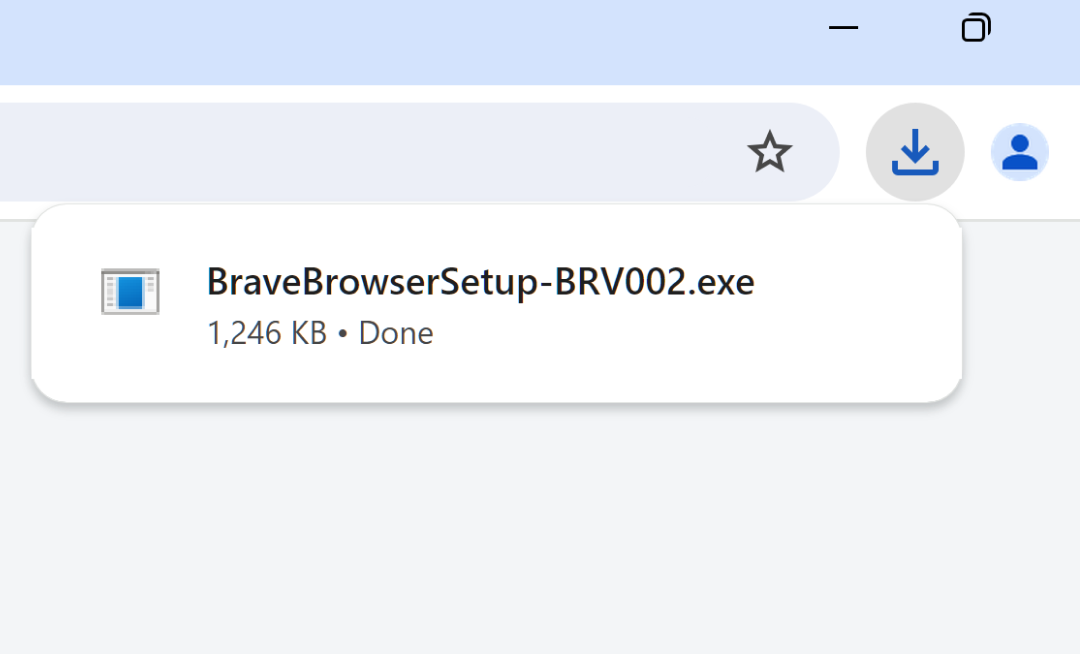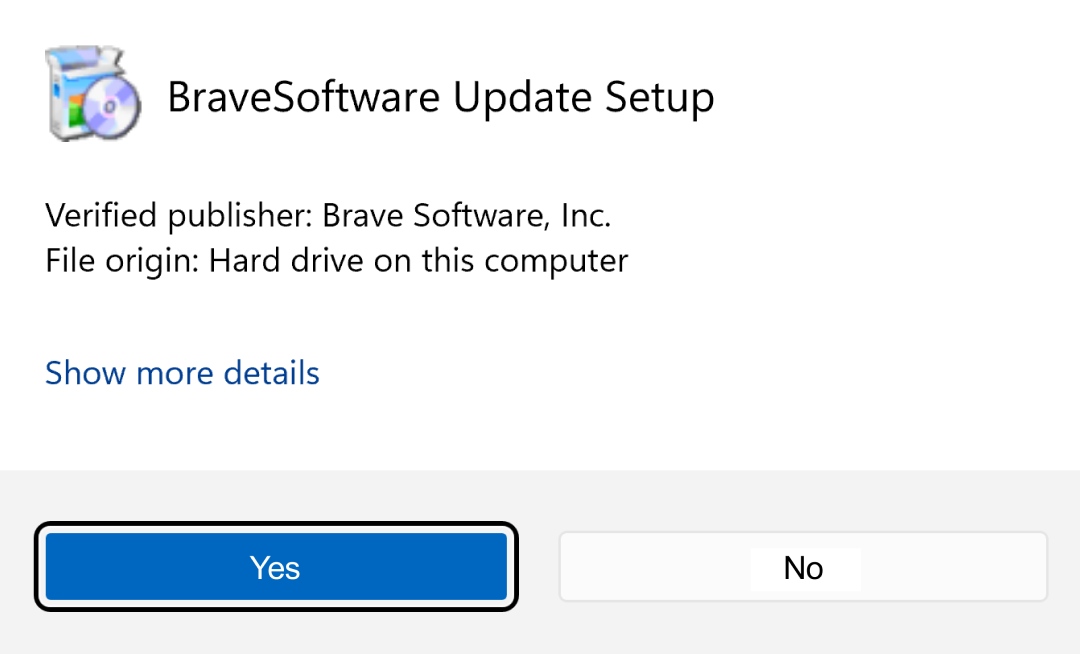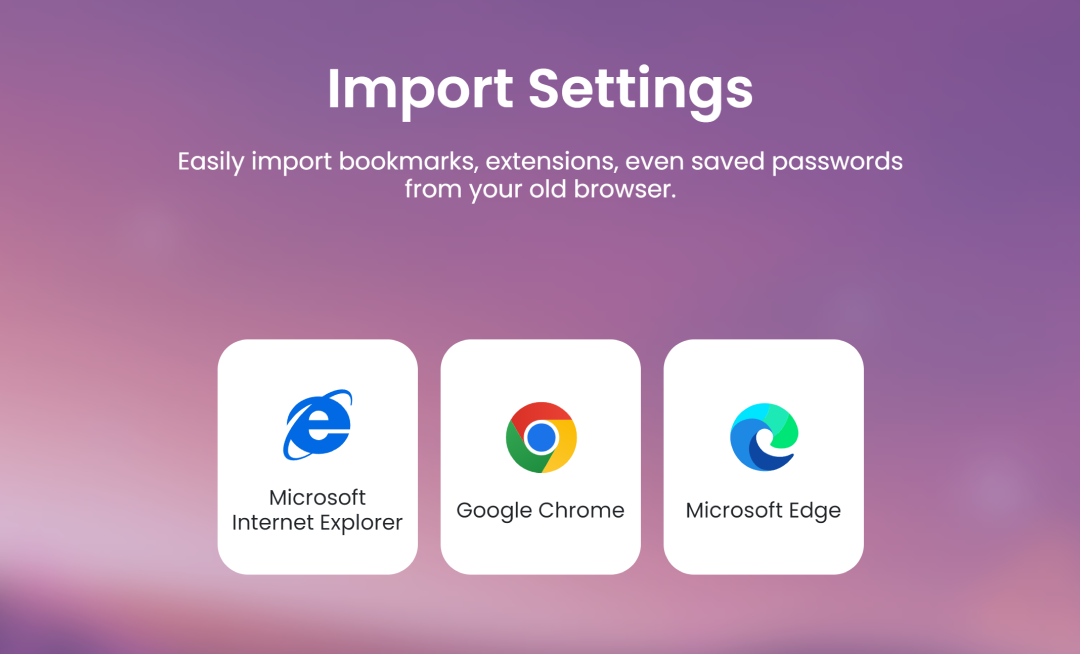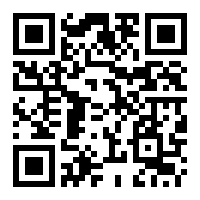Brave browser passes 100 million monthly active users

Brave Search also now at 20 billion annualized queries
As of September 30th, the Brave browser has surpassed 100 million monthly active users (MAU) worldwide across desktop and mobile, officially reaching 101 million users.
We’d like to take a moment to celebrate this achievement, and tease what’s next. We’d also like to thank the 100 million (and counting!) people—whoever they are—who’ve joined Brave’s mission of building a privacy-by-default, user-first Web. We’re grateful for the support of all our users and particularly our vibrant Brave and BAT communities, whose passion and advocacy continue to drive us forward.
“100 million users represent more than a growth milestone—they constitute a movement for a better Web that puts users first. Across the globe, users are choosing privacy and control over their online experience, instead of Big Tech’s tracking and abuse,”
said Brendan Eich, CEO and co-founder of Brave.
“Every product we’ve launched since our browser—our search engine, our premium products, our ad platform—has been built with privacy protections. As we expand our AI offerings, we will continue to design for privacy-by-default, which will fuel our next wave of growth.”
Brave Browser growth
Over the past two years, the Brave browser has seen an average of about 2.5 million net new users each month. This September, we officially surpassed 100 million monthly active users (MAU) worldwide. At the same time, we surpassed 42 million daily active users (DAU), for a DAU-to-MAU ratio of 0.42, underlining the high engagement that users have with Brave.
This growth has been fueled by a global awareness that Brave is an alternative to Big Tech and that users benefit greatly from a browser that preserves their privacy and is up to 3 times faster than competitors. Also, when users are given a choice, users exercise that choice and switch to new browsers. For example, daily installs for Brave on iOS in the EU went up 50% with the new browser choice panel, following the implementation of the DMA and release of iOS 17.4 in 2024.
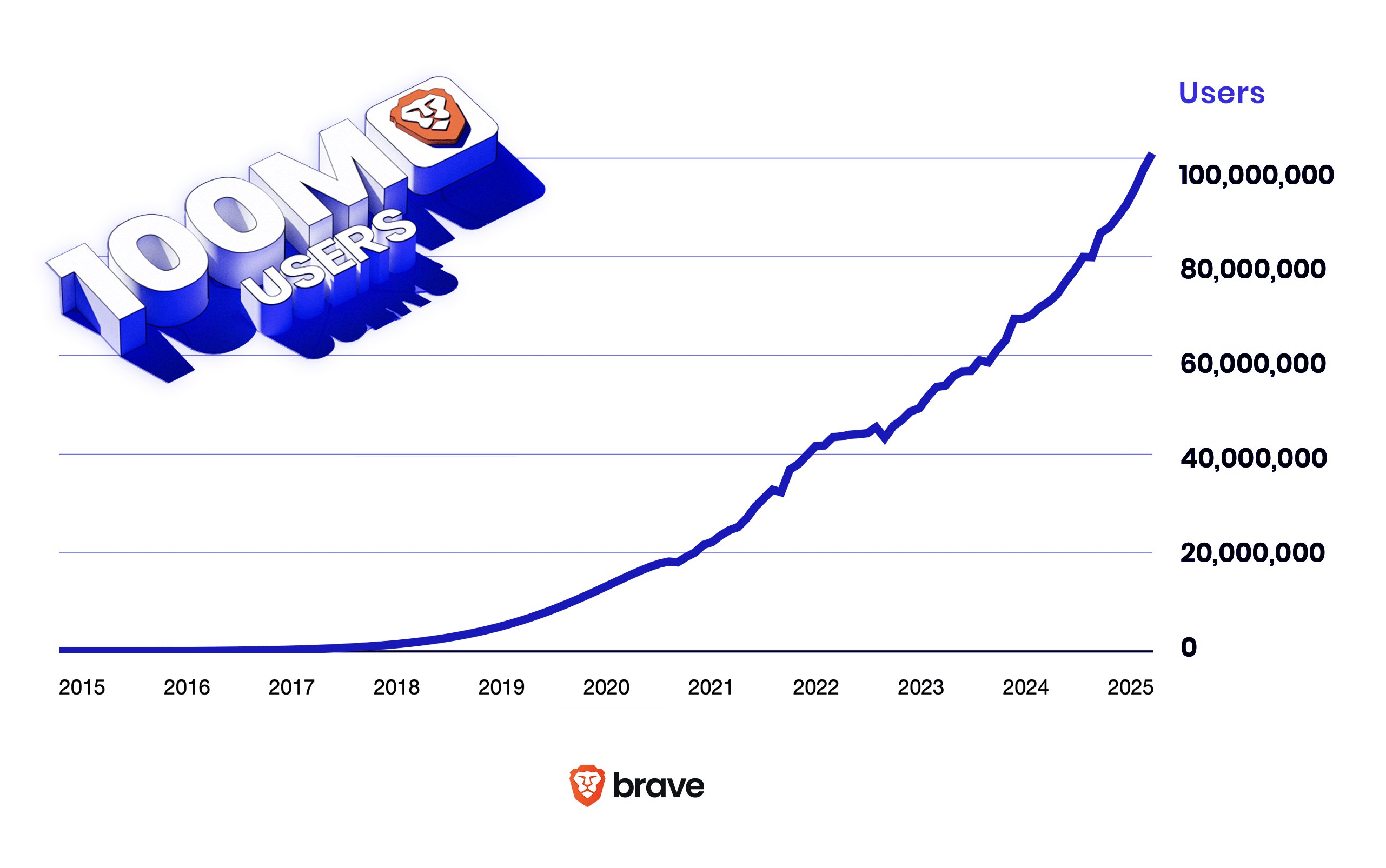
The growth of Brave Search
Brave Search is powered by its own, independent index of the Web. This makes it one of only three truly independent search engines in the western world, and the only one outside Big Tech.
Brave Search is also growing fast, with more than 1.6 billion queries each month, or nearly 20 billion queries per year. On average, Brave Search serves high-quality, independent, private answers for more than 50 million user queries every single day.
Brave Search also serves over 15 million AI-generated search answers daily, as millions of our users seek the convenience of AI integrated into a search engine. Brave also just announced Ask Brave, a new AI chat experience native to Brave Search that consolidates search and AI chat.
And while Brave Search is the default search engine for most Brave users, we’re also seeing increasing usage (about 8% of total daily queries) from other browsers (most notably Chrome).
Brave as a privacy ecosystem
We realized early on that people can only stay as private as the tools they use to get online. That’s why we sought to empower the browser as a single privacy super app. That means browsing that blocks ads and trackers by default, but also private search, and a suite of other tools as privacy alternatives to Big Tech offerings. By building these tools directly into the browser, we can remove the need for extensions.
Brave Shields provide protection on every webpage you visit. By default, Shields block ads and third-party trackers, cross-site cookies, fingerprinting, and more. Shields can be easily configured to your preferences. And, best of all, these protections are provided without the need to download extensions or other apps.
In addition to Brave Shields, the Brave browser has many advanced security and privacy protections built in. These include reduced network server calls, storage partitioning, Global Privacy Control (GPC) enablement, bounce tracking prevention, and many more.
Finally, we knew that for users to protect their privacy online, we needed to offer usable, private-by-default alternatives. Brave Search never profiles its users. Brave Leo, the integrated AI assistant in the browser, doesn’t retain or share chats, or use them for model training. Brave VPN allows people to mask their location and hide their IP address, even on apps outside the Brave browser. Brave Wallet supports private and transparent shielded Zcash transactions. This kind of privacy-first approach applies to every product and feature we build.
Brave and AI
Brave Leo transforms how you use the Web, offering all the power of tools like ChatGPT without the privacy compromises or vendor lock-in. Choose from leading AI models including Claude, DeepSeek, Llama and Qwen, or connect your own local or remote models for better control over your AI experience, and total privacy. As your built-in browser companion, Leo understands your context across multiple browser tabs, PDFs, images, videos and documents, plus accesses real-time information to help you research, analyze, and create without constantly switching between apps. Best of all, Leo does not require an account or profile, and your conversation history is stored on your device. Leo doesn’t retain or share chats, or use them for model training.
The Brave Search “AI Answers” and “Ask” features allow people to ask questions and receive high-quality, current answers right in the search experience. Users can find AI-powered answers at the top of the results page, or even in a full-screen, follow-up chat.
Brave is also planning for the next phase of AI, with Leo’s new agentic experience. Like other AI agents, Leo agentic will be able to take actions on your behalf—drafting messages, responding, handling payments and bookings, and more. But, uniquely, Brave’s agentic experience will be siloed in a specialized browser profile, ensuring the agent has no access to other tabs that may contain sensitive information. It will also ensure you have ultimate say over the actions the agent can take and guard against unwanted actions.
Brave as a business
While Brave has seen incredible adoption among end users around the world, Brave has also grown as a sustainable business.
Brave Ads
Brave’s first-of-its-kind, privacy-respecting digital ads ecosystem is now working with some of the biggest brands in the world. Brave ads allow brands to reach incremental audiences that aren’t reachable in other channels. They provide unique ad units that appear directly in the browser interface or search engine results page, and provide safety for both brands (premium placement without unwanted collisions) and users (Brave Ads respect user privacy). To date, Brave Ads have been used by some of the biggest brands in the world, including Amazon, Ford, Intuit, eBay, Wayfair, and more.
→ Learn more about Brave Ads, or get started with your first campaign.
Brave Search API
Brave Search is powered by its own, independent index of the Web. This makes it one of only three independent indexes in the western world, and the only one outside of Big Tech. And unlike Alphabet’s Google or Microsoft’s Bing, or supposedly independent providers like DuckDuckGo (which relies on Bing for its results), Brave doesn’t bias or censor results, or manipulate its search algorithm.
This index is now available to power other search or AI applications, via the Brave Search API. The Brave Search API can power agentic search, chatbots, coding assistants, and AI search engines. It provides real-time data to reduce hallucinations, and excels in retrieval-augmented generation (RAG) pipelines. Best of all, the Brave Search API is available at no cost for up to 2k queries per month (QPM), and with affordable, transparent paid options starting as low as $5 CPM. The Brave Search API is currently the single source of real-time data for some of the biggest AI LLMs.
Brave Premium
While all of Brave’s end-user features are available for free, some may want a more premium experience. To this end, Brave offers affordable, enhanced versions of several of our free features, which we collectively call Brave Premium.
Brave Leo premium offers higher rate limits and access to more models. Brave Talk, our free videoconferencing tool, also has a premium version that brings better moderator controls, call records, and more. And Brave Search premium offers users an ad-free experience.
Our most widely-used premium feature—Brave VPN—now serves nearly 100,000 subscribers. One Brave VPN subscription protects up to 10 devices across desktop, iOS, and Android. With a slew of features meant to enhance both privacy and streaming performance, Brave VPN ensures safe access to the content you want, no matter where you are in the world.
Brave Wallet, Rewards, and BAT
Brave also offers great Web3 tools built right into the browser. Brave Wallet is a secure, multi-chain wallet where users can manage tokens, NFTs, and currencies, without the risk of third-party extensions. Brave Rewards is a completely opt-in experience that allows users to choose how (and how often) they see privacy-preserving Brave Ads in the browser. If they choose to opt in and connect a wallet, users can then earn a cut of any ad revenue, in the form of the Basic Attention Token (or BAT). Brave Rewards also gives users an easy way to support the millions of websites and content creators registered with Brave Creators. With over 99% of its 1.5 billion supply in circulation, BAT is ranked as the 14th most distributed token by on-chain holders on Ethereum. This made Brave the first crypto application with more than 1 million users.
Many of the leading names in crypto and Web3 advertise with Brave Ads, integrate with Brave Wallet, or join the Rewards Partner Program.
A note on how Brave tallies user growth and other metrics
As a privacy company, we pride ourselves on adhering to a stronger variation of Google’s old (and since abandoned) mantra. When we say “Can’t be evil,” we mean we don’t have access to personal user data in the first place.
To that end, we’d like to explain how Brave even knows data points like monthly active users or daily search queries. We keep basic aggregate counts of how many times the browser is downloaded each day, across desktop, iOS, and Android. These counts tell us only that some computer or mobile device downloaded the browser, and the platform of that device; it does not tell us who or on which exact device.
We’re able to keep a similar count of daily and monthly usage based on something called the “daily usage ping.” At essence, this is a once-per-day ping from the browser client to our servers, telling us that the browser was opened on a device. Along with this ping is included the date Brave was installed on that device; in this way we can calculate retention, and ensure we’re not double counting. All data is collected and analyzed at an aggregate level, and safeguards are in place to ensure no personal data is collected. These safeguards can be reviewed in our open-source codebase.
We use a similar mechanism to tally daily queries in Brave Search—we can know how many queries happened, but not who made them, the text of the query itself, or the query results.
Finally, to understand usage of our individual features, we utilize Privacy Preserving Product Analytics (or P3A for short). This mechanism is also open-source and can be reviewed by anyone.



